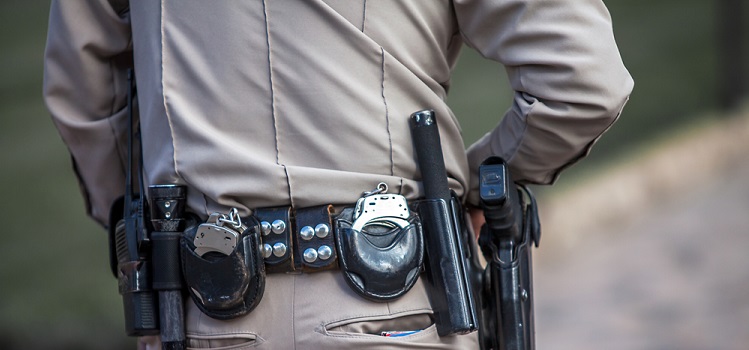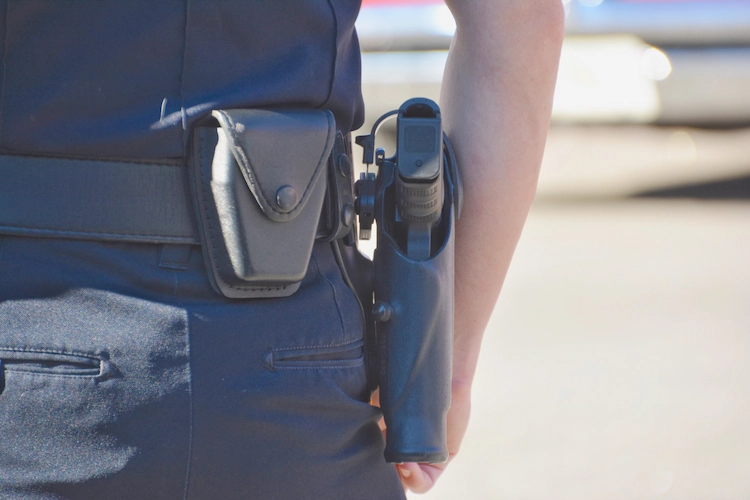SCOTUS to Clarify What Constitutes a Fourth Amendment Seizure

When the U.S. Supreme Court returns to the bench next month, one of the first cases it will consider involves what constitutes a seizure for purposes of the Fourth Amendment’s ban on unreasonable seizures. The case, Torres v. Madrid, was originally scheduled to be heard in March, but was bumped from the docket after COVID-19 forced the justices to temporarily suspend arguments.
Facts of the Case
Petitioner Roxanne Torres was sitting in her vehicle with the motor runningin the parking lot ofan apartment complex in Albuquerque, New Mexico.OfficersJaniceMadrid andRichardWilliamson, whowere watchingthe apartment complexin an effort to serve an arrest warrant,parked their unmarked patrol car near Torres’s vehicle.
Officers Madrid and Williamson attempted to open the locked door of the car in which Torres wassitting.The officers claim they shouted to Torres to open her car door.However,shewas unable to hear or understand what the officers were saying.Instead, Torres thought she was the victim of an attempted carjacking, so she drove forward. Both officers testified that they believed Torres was going to hit them with her car. Officers Madrid and Williamson both fired their weapons at Torres as she drove away. Thirteen 9 mm rounds hit Torres’ vehicle, andshewas struck twice, in the back. Despite her bullet wounds, Torres did not stop the car, butcontinued to driveaway.Torres continued to drive to Grants, New Mexico, where she went to a hospital for treatment.
Torres filed a civil rights complaint in federal court against Madrid and Williamson, alleging excessive use of force in violation of the Fourth Amendment. She alleged that the officers’ intentional discharge of their weapons exceeded the degree of force that reasonable, prudent law enforcement officers would have applied under the circumstances, and sought relief under42 U.S.C. § 1983.Thedistrictcourt concluded that the officers were entitled to qualified immunitybecausethe officers had not seized Torres at the time of the shooting. Accordingly,there could be no Fourth Amendment violation.
The Tenth Circuit Court of Appeals affirmed. It held that an officer’s application of physical force is not a seizure if the person upon whom the force is applied is able to evade apprehension. “Here, the officers’ use of deadly force against Torres failed to ‘control [her] ability to evade capture or control,’” the appeals court concluded. “Torres managed to elude police for at least a full day after being shot, there is no genuine issue of material fact as to whether she was seized when Officers Williamson and Madrid fired their weapons into her vehicle.”
Issues Before the Supreme Court
As Torres noted in her petition for writ of certiorari, the circuit courts of appeal are split over the meaning of “seizure,” which is central to Fourth Amendment jurisprudence. The Tenth Circuit—joined by the D.C. Court of Appeals—hold that, even where police officers intentionally apply physical force, there is no seizure if the suspect is able for a time to evade capture. Conversely, the Eighth, Ninth, and Eleventh Circuits and the New Mexico Supreme Court, hold that a suspect is seized when either she submits to the authority of law enforcement (for example, by remaining at the scene or ceasing flight in response to a verbal command) or when a law enforcement official makes physical contact with the suspect with the intent to restrain her, whether or not that physical contact is immediately successful in immobilizing the person.
Given the importance of the fundamental Fourth Amendment issue, the Supreme Court granted certiorari. The justices have agreed to consider the following question:
Is an unsuccessful attempt to detain a suspect by use of physical force a “seizure” within the meaning of the Fourth Amendment, as the Eighth; Ninth, and Eleventh Circuits and the New Mexico Supreme Court hold, or must physical force be successful in detaining a suspect to constitute a “seizure,” as the Tenth Circuit and the D.C. Court of Appeals hold?
Oral arguments are scheduled for October 14, 2020. A decision is expected before the term ends in June 2021.
Previous Articles
Supreme Court Rejects Mexico’s Suit Against U.S. Gun Manufacturers
by DONALD SCARINCI on July 8, 2025
In Smith & Wesson Brands v. Estados Unidos Mexicanos, 605 U.S. ____ (2025), the U.S. Supreme Co...
SCOTUS Sides With Employee in Reverse Discrimination Case
by DONALD SCARINCI on July 2, 2025
In Ames v. Ohio Department of Youth Services, 605 U.S. ____ (2025), the U.S. Supreme Court held tha...
Supreme Court Rejects Moment of Threat Doctrine in Deadly Force Case
by DONALD SCARINCI on June 30, 2025
In Barnes v. Felix, 605 U.S. ____ (2025), the U.S. Supreme Court rejected the Fifth Circuit Court o...
The Amendments
-
Amendment1
- Establishment ClauseFree Exercise Clause
- Freedom of Speech
- Freedoms of Press
- Freedom of Assembly, and Petitition
-
Amendment2
- The Right to Bear Arms
-
Amendment4
- Unreasonable Searches and Seizures
-
Amendment5
- Due Process
- Eminent Domain
- Rights of Criminal Defendants
Preamble to the Bill of Rights
Congress of the United States begun and held at the City of New-York, on Wednesday the fourth of March, one thousand seven hundred and eighty nine.
THE Conventions of a number of the States, having at the time of their adopting the Constitution, expressed a desire, in order to prevent misconstruction or abuse of its powers, that further declaratory and restrictive clauses should be added: And as extending the ground of public confidence in the Government, will best ensure the beneficent ends of its institution.





